细粒棘球绦虫,又称包生绦虫。成虫寄生于犬科动物小肠内,幼虫(称棘球蚴或包虫)可寄生于人和多种食草动物(主要为家畜)的组织器官内,与多房棘球绦虫一起均引起包虫病或称棘球蚴病(hydatid disease,hydatidosis,echinococcosis)。
形态
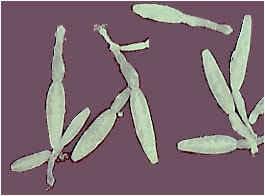
Echinococcus granulosus adults

Scolex of Echinococcus granulosus
成虫:

长约2-7mm,为最小的绦虫之一。
头节有顶突、两圈小钩和四个吸盘,为吸附器官。
链体具幼节、成节和孕节各一节,孕节内子宫含虫卵200-800个。
幼虫

Hydatid
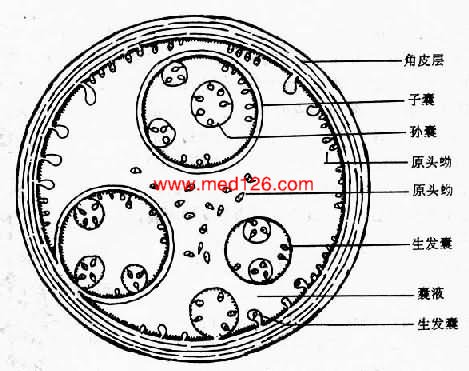
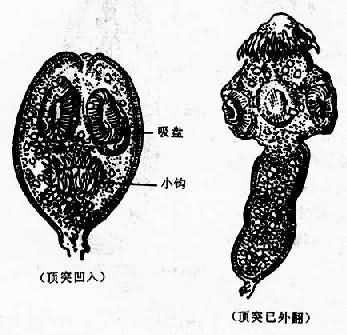
Protoscolex of E.granulosus
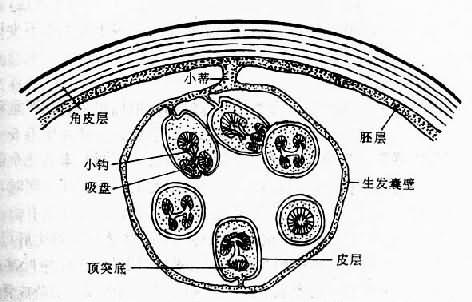
Brood capsule of E.granulosus
1. 直径一到数十厘米,囊壁分二层,外层为角皮层,内层为胚层,胚层向囊内长出许多原头蚴和生发囊,生发囊仅有一层生发层,向长出许多原头蚴,或进一步发育为与母囊结构一样的子囊,子囊内还可长出孙囊。囊内充满液体,称棘球蚴液,为强过敏原。
2. 从囊壁上脱落的原头蚴、生发囊和子囊统称为棘球蚴砂(Hydatid sand)。
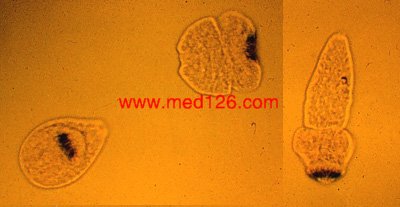
"Hydatid sand".
Fluid aspirated from a hydatid cyst will show multiple protoscolices (size approximately 100 µm), each of which has typical hooklets. The protoscolices are normally invaginated (left), and evaginate (middle, then right) when put in saline. Image contributed by Georgia Division of Public Health.
3. 囊壁破裂原头蚴散出后在终宿主体内(如:狗)可发育为成虫,在中间宿主体(如:羊、人等)内可形成新的棘球蚴。